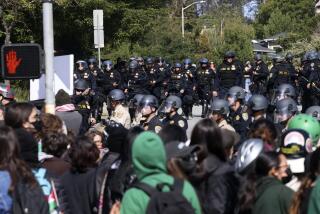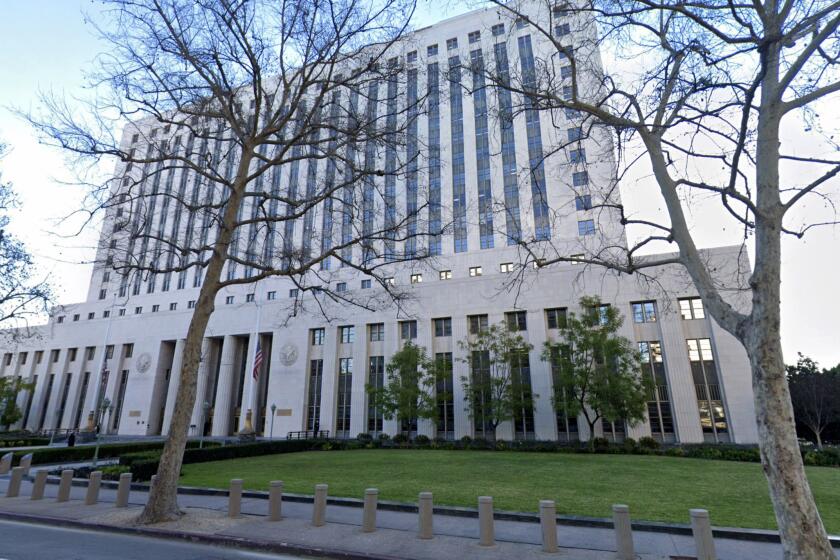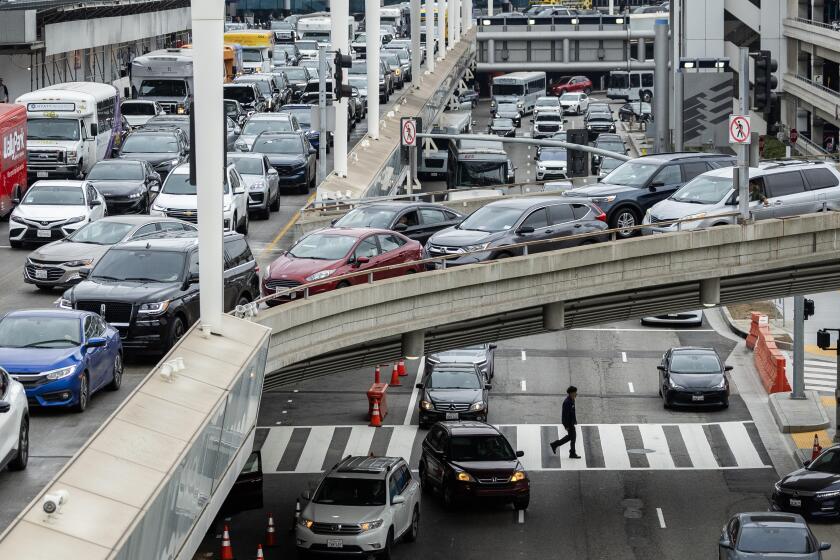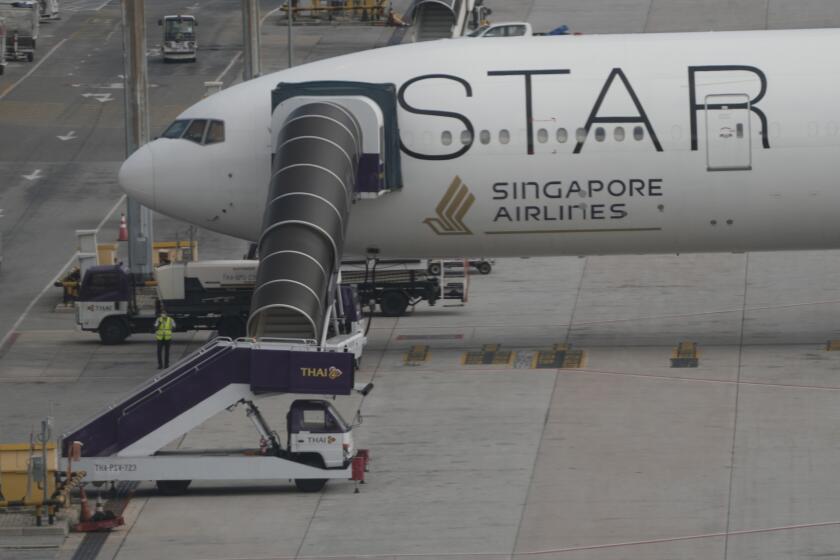Burbank Airport Reports Record 3.7 Million Passengers for ‘90-’91 : Travel: Officials attribute the 26% increase from the previous year to an expensive advertising campaign and the arrival of Southwest Airlines.
Passenger volume at Burbank Airport reached a record 3.7 million during the 1990-91 fiscal year, despite a sluggish national economy, the Persian Gulf War and the loss of one of the airport’s longtime air carriers, according to a recently released annual report.
The number of passengers grew by 26% over the previous year’s 2.9 million--an increase that airport officials attribute partly to a marketing blitz that included a major billboard campaign and a takeoff in airline ticket sales sparked by the arrival of Southwest Airlines in April, 1990.
When the financially ailing USAir left Burbank Airport and five other “satellite” airports in California in May, 1991, Southwest and other airlines already operating out of Burbank--including United, American and America West--moved in to fill the void. USAir had flown 20 daily flights to the San Francisco Bay Area and Sacramento--a market that Southwest began to serve.
“It is our belief that the primary cause for the recent surge in use and popularity is the recognition by air carriers that they can develop the Southern California market by offering frequent and competitively priced service at Burbank,” Airport Authority President Robert W. Garcin said in the annual report.
The increase in business signals a marked improvement for the airport--officially called the Burbank-Glendale-Pasadena Airport--which had struggled during fiscal 1988-’89, reporting profits then of only $1.9 million for the year. Those profits reflected a slight dip from the previous year.
But in fiscal year 1989-’90, the profits increased to $2.9 million. Profits reached $3.6 million in the fiscal year that ended June 30, 1991, covered in the latest report.
Airport officials said they expect the rise to continue in the current fiscal year, which ends Tuesday.
By comparison, passenger volume at Los Angeles International Airport stayed relatively stable in the 1990-’91 fiscal year, dropping from 45.8 million to 45.6 million passengers over the previous year, according to LAX officials.
In general, it was a lackluster year for airports around the country, with many reporting either declining or stagnant passenger volumes.
Victor Gill, Burbank Airport’s director of public relations, said advertising played a role in drawing the record number of passengers to the airport. “I would say we are more visible on the marketing front than we’ve ever been,” he said.
He said the airport spent $145,000 on advertising in the 1990-’91 fiscal year, an increase of about $100,000 over the previous year.
A big part of the marketing blitz, he said, was a series of billboards installed throughout the San Fernando Valley.
The billboards encourage airline passengers to choose Burbank Airport over the Los Angeles International Airport.
The slogans include: “Why Drive Over The Hill?,” “LAX Jammed, Use Alternate Route,” and “Burbank Airport: Up Close and Personal.”
In addition to selling itself to passengers as a hassle-free alternative to LAX, he said airport officials are trying to persuade airlines to expand their service out of Burbank by providing more flights with competitive fares to tap into a large potential market.
“We are going to the airlines and saying you have 2.5 million people within 15 miles of this airport,” he said.
Airport officials are close to completing an environmental study on the construction of a new terminal that would allay the concerns of Federal Aviation Administration officials who say the current terminal is too close to the runways to meet modern safety standards.
Preliminary plans call for a terminal that would be 450,000 to 650,000 square feet and have 19 to 27 gates. The present terminal is 165,000 square feet and has 14 gates.
In an interview, Garcin said he does not expect the new terminal to attract more passengers.
He said business will continue to improve at Burbank as long as airlines continue to improve service by providing the traveler with more destinations.
More to Read
More to Read
More to Read
Start your day right
Sign up for Essential California for news, features and recommendations from the L.A. Times and beyond in your inbox six days a week.
You may occasionally receive promotional content from the Los Angeles Times.







